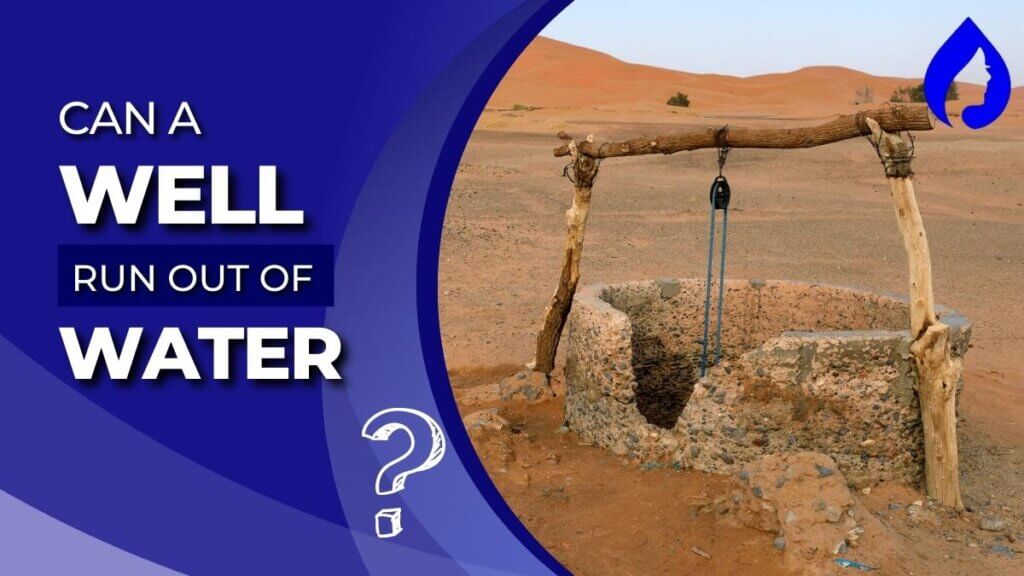
A well can run out of water if it is over 30 years old or due to declined precipitation, excessive water usage leading to a drop in groundwater level, and groundwater mismanagement. In fact, Groundwater overuse led to the widespread drying of wells in Arizona and California in 2022.
The best way to fix a dry well is by processes like:
Continue reading for a detailed answer on: “Can a well run out of water” along with practical solutions to deal with the problem.
Why Does Well Water Run Out: Causes Behind
There can be environmental reasons (affecting all wells in your area) or specific reasons (affecting only your well).
We’ve discussed both these reasons in detail here:
Environmental/General Causes
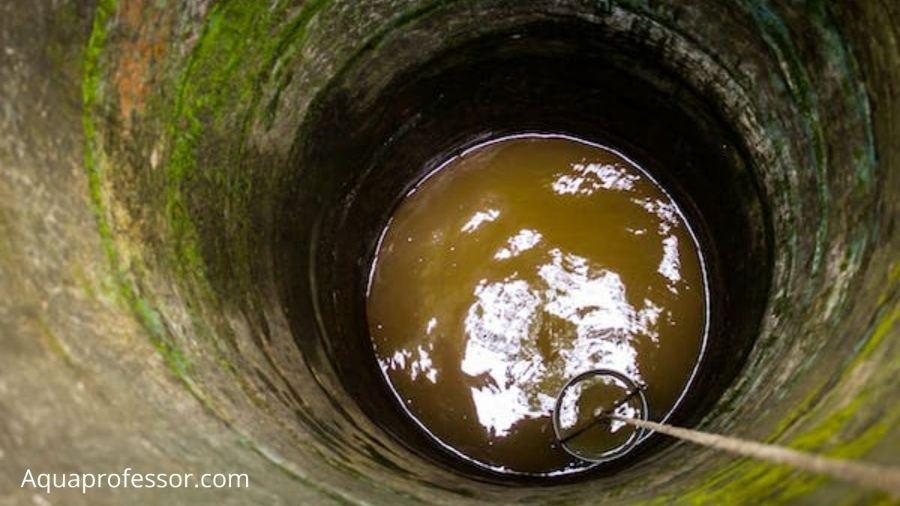
Depleting Groundwater Levels:
Groundwater, being a fresh water source, is extremely precious for the entire world, especially for areas that face scarcity of surface water (lakes, rivers, ponds, etc.).
The people of those areas use groundwater for:
Moreover, the source of the well water are also the fresh groundwater resources.
However, recently it has been found that people are pumping out groundwater at a higher than its recharging capability. As a result, it creates a shortage of groundwater, which diminishes the water in various wells. It then takes a lot of time for Groundwater recharge.
During droughts, constant pumping depletes the groundwater beyond the normal water retention level, making the wells dry. Such declines in groundwater levels are long-term and take much time to recover.
In fact, sustained groundwater pumping in some areas not only leads to drying up those wells. It also results in the following:
In the United States, groundwater depletion mainly happened in the Atlantic coastal plain, Gulf coastal plain, Pacific Northwest, Chicago-Milwaukee region, West-Central Florida, High plain regions, and Desert Southwest.
Drought & Climate Change:
Climate change or drought is another factor for why a well runs dry. It has affected many regions of the USA, especially California. Residents in California have recently experienced severe drought conditions that has depleted more than 1200 wells as of October 2022.
Compared to 2021’s temperature, California’s temperature has increased by 50 percent, leading to severe drought, especially in summer. San Joaquin Valley, the agricultural region in California, has faced the most severe groundwater crisis. Many crops have failed there due to water scarcity.
The problem worsened so much that people had to depend exclusively on plastic bottled drinking water or storage tanks (the water delivery trucks fill up daily) for survival.
In the drought-attacked regions, the farmers, finding scarcity in the surface water, pump more and more groundwater for their agricultural purpose or depletes the aquifers. Further, It results in more shortage of groundwater (drop in groundwater table) and drying up of private and municipal wells.
Growing Water-Thirsty Crops:
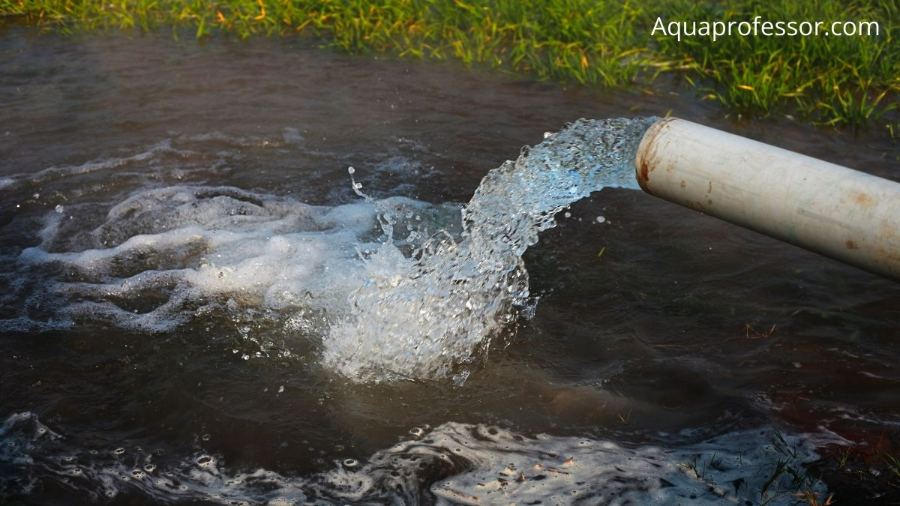
Cultivating water-thirsty crops is another main reason for dry spells.
In various regions in the USA, especially in Arizona, big farmers tend to grow more water-thirsty crops like alfalfa.
Why?
Due to high demand in international markets, they serve as excellent livestock fodder.
But, since a lot of water is required for growing these crops and there is no strong law in Arizona regarding the quantity of water, a megafarm can draw. The big farmers draw enormous quantities of groundwater to grow the highly demanded crop.
The result is acute water scarcity due to groundwater depletion, causing dry wells.
Overpumping and Multiple Wells:
If you live in an area with multiple wells, you are at risk of facing the issue of a dry well. If the owners of neighboring wells overpump water from the ground, it will also affect your well.
In addition, due to the scarcity of groundwater, the wells in the closer areas might truckle your well’s water, leaving your well dry.
Specific Causes (Confined To An Individual Private Well)
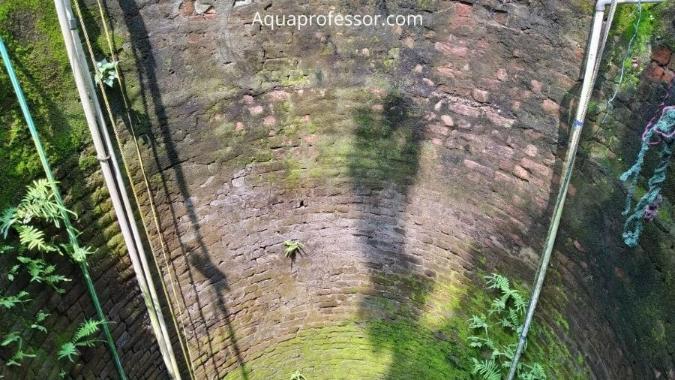
Loose Sediment Infiltration:
When a new well is built, the professional usually insert a PVC casing deep down its hole’s length. This PVC casing comprises screened sections through which the water from the nearby aquifers flows into your well.
As time passes and the well becomes old, some loose sediments and water infiltrate through the screened sections, diminishing the water level in your well and gradually making it dry.
It can happen (though in few cases) in a person’s newly built well.
To prevent this problem, a well owner must regularly check their well’s depth with the help of a water level meter (also known as a well dipper).
Abnormal Water Usage:
Abnormal water use by people in an area also leads to the wells drying up. How many people can use a single well depends on factors like:
What can you do?
Shallow well:
Some wells are naturally shallow and thus comprise less water than a normal well. If the aquifer recharge is slow, it can become dry easily.
Also, the recharge of the aquifers sometimes varies depending on the season or time.
There’s no way to detect the actual amount of water in an aquifer or the rate of water recharge. Also, we don’t have many options to fix the issue of shallow wells or the slow recharge rate of an aquifer. However, you can do the following things:
How Do You Know If Your Well Is Running Dry?
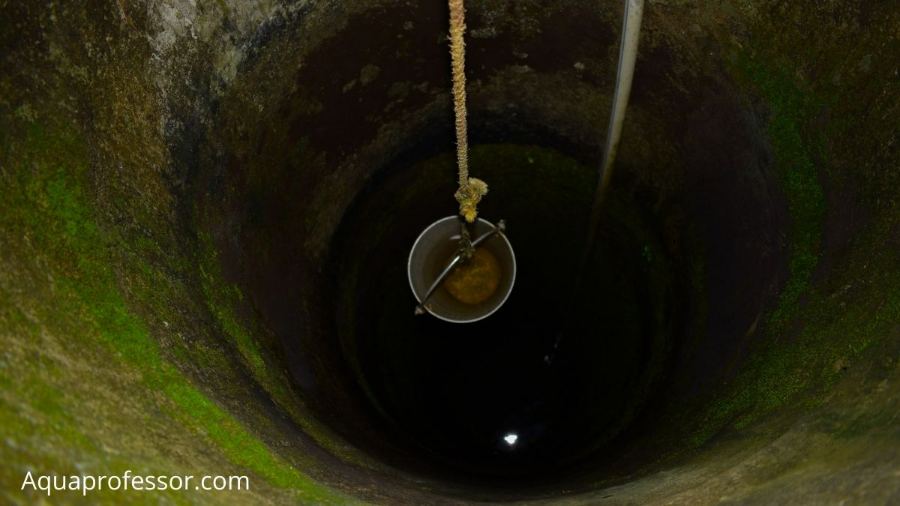
Here’s a quick checklist to check whether your well is running out of water:
Also Read: Why Does My Water Pressure Fluctuate?
What To Do If Your Well Runs Out of Water?
To troubleshoot the problems with dry well-related symptoms, first assess the situation with experts to know what is causing your well to run dry and then act accordingly.
Here are some practical measures to fix the issue:
Troubleshooting Measures
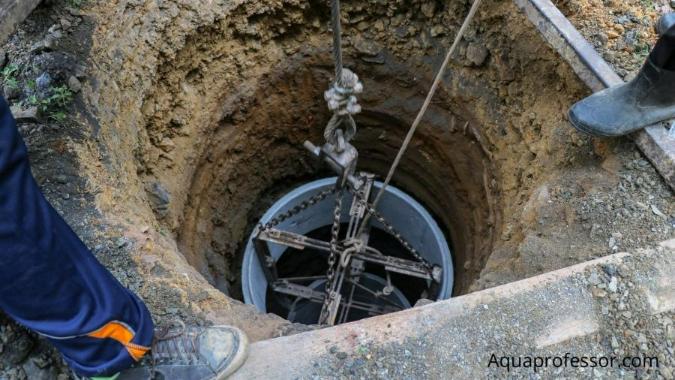
Deepening Well Depth:
You must seek this troubleshooting measure if your well is of a shallow type (>50 Ft depth). For example, if your well is 50 ft deep, you can dig it 10 ft more to make it 60 ft.
Deepening your well depth by drilling it allows you to get water from a nearby aquifer where water is still present.
You can get it done by a drilling technician, but it can become expensive with the change of location from normal grounds to sloppy or rocky terrains. Digging wells in rocky soils or deepening the well depth in such soils is much more effective than digging or deepening them on sandy soils.
This is because water quickly moves downward on sandy soils; thus, the wells dug on these soils run dry within a few years.
However, drilling in sloppy or rocky areas doesn’t ensure you completely troubleshoot your dry well issues.
Lowering Water Pump:
Your well can dry up if the water pump can’t reach groundwater levels. As discussed earlier, it can happen when the water table falls because of overuse or drought.
The solution is simple:
Lower your submersible pump (generally installed in-house wells) with a well-drilling technician’s help to reach the new amounts of groundwater level. However, you must first determine the well depth and pump intake capacity.
However, this will not work in the case of a jet pump.
Repairing the Well That Has Run Dry by Hydrofracturing:
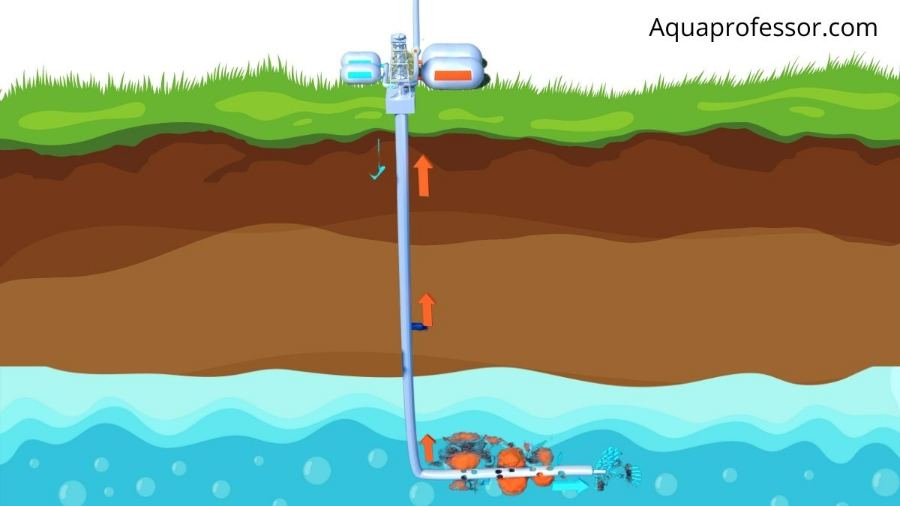
In this process, the well is rehabilitated by making the high-pressure water flow through the aquifer. This water forces away the aquifer fracture, blocking silt or sediments, thus clearing the passage so more water can enter your well through the aquifer.
This process has a success rate record of 97%. However, in some cases, the water flow never improves even after hydrofracking due to specific geological conditions.
The price of hydrofracturing is between $2000 – $5000, generally less than the price of digging a fresh and separate well.
Replacing expired wells:
A normal well has a lifespan of 20 – 30 years, excluding the replaceable parts, so if your well is over 30 years old, it’s time to dig a fresh well. Drilling a new well in time will help you avoid dry well issues.
It is faster to dig a new well than repair an existing one. Besides, it has no risk of failure as the technician will find a suitable site using groundwater exploration methods.
While building your new well, you get better edifice, output, or repository tank capability than your old well.
Also Read: Pros And Cons Of Well Water
Preventive Measures
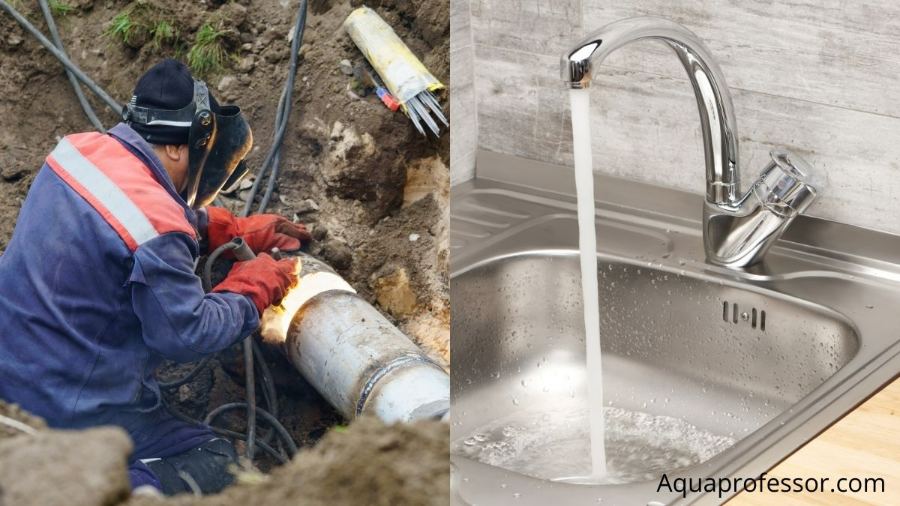
Fix well leaks:
Sometimes there are leaks in our wells that we ignore, thinking to be a minor issue. But, one must remember that even minor leaks in a well and minor water wastage per second may also result in a big water loss per day.
So, it’s very important to check out the leakage areas of your well, if any, and fix them.
Fix faucet leaks:
Sometimes leaks in the faucets, water lines, or pipes also result in a well that has run dry and give the well water system undue strain. So, always ensure that they all are leak-free.
Avoid water wastage:
Water is an important and limited resource of our environment, so it is important to cut water wastage and conserve water whenever possible. The following measures can help achieve that:
Do Wells Run Out of Water: FAQs
How often do wells run out of water?
On average, residential water wells run for 20 – 30 years, although many can even run for 50 years.
As a well ages, it gradually becomes confronted with mineral and sediment deposit issues reducing the water replenishment rate. If many sediments and minerals build up within your well, the well starts drying faster.
Does well water replenish itself?
Yes, if rainfall shortage or excessive water pumping is the reason behind the dryness of your well water, it will again replenish itself with time. However, whether the replenishment will be fast or slow depends on the depth of the well and the availability of rainfall in your area. If a little water is left in your well, you can lower the pump to access underground water.
Can an artesian well run out of water?
If the artesian well is constructed suitably and its flow is controlled properly, it never dries up. However, if you fail to control its water flow, it may run out of water and get dry.
Why does my well keep running out of water?
A well mainly runs out of water due to its fixtures’ malfunction, like the malfunction in its pressure booster pump, leakage in the pressure tank, or problem in any other unit of a tank fill system. It results in the well pump drawing an insufficient water supply resulting in the gradual drying of the well.
Can a well run dry in the winter?
Yes, a well can temporarily run out of water in the first half of winter due to freezing temperatures. However, the dryness is temporary because the snow melts down during the second half of winter, and the water level again surges. So, the aquifers get enough water to contribute to the wells.
Adarsh is a Health & Nutrition Sciences graduate with expertise in environmental health. He is associated with ventures like Glacier Fresh Filter and Simpure Filter Systems. Through Aqua Professor, he intends to provide helpful information to every home to help them make smarter decisions.
